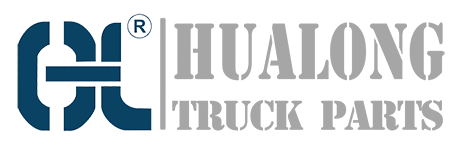1. Introduction: Understanding Utility Truck Parts
Utility trucks are essential for a wide range of industries, from construction to telecommunications. These versatile vehicles are designed to carry out various tasks, but like any machine, they require regular maintenance and occasional part replacements. In this comprehensive guide, we will explore the different utility truck parts and their functions, helping you understand the importance of proper upkeep and ensuring optimal performance for your fleet.
2. Engine Parts: Keeping the Heart of Your Utility Truck Healthy
The engine is the heart of any utility truck, providing the power needed to perform demanding tasks. Key engine parts include the cylinder head, pistons, crankshaft, and camshaft. Regular oil changes, air filter replacements, and spark plug maintenance are crucial to keep the engine running smoothly. Additionally, monitoring coolant levels, checking for leaks, and inspecting belts and hoses are essential to prevent costly breakdowns.
3. Transmission and Drivetrain Parts: Ensuring Smooth Power Transfer
The transmission and drivetrain components of a utility truck work together to transfer power from the engine to the wheels. Transmission parts, such as the torque converter, clutch, and gears, need to be inspected regularly for signs of wear and tear. The drivetrain components, including the driveshaft, differential, and axles, also require proper maintenance. Regular fluid changes and inspections of these parts are necessary to prevent costly repairs and maintain optimal performance.
4. Suspension and Steering Parts: Achieving a Smooth Ride
The suspension system and steering components are crucial for ensuring a comfortable and controlled ride in a utility truck. Leaf springs, shock absorbers, and control arms are some of the key suspension parts that need to be checked for signs of damage or wear. Steering parts, such as the steering gear, tie rods, and ball joints, also require regular inspection and maintenance. Proper alignment and balancing are essential to prevent uneven tire wear and ensure safe handling.
5. Electrical and Lighting Parts: Illuminating the Way
A utility truck relies on a complex electrical system to power various components, from headlights and taillights to auxiliary equipment. Batteries, alternators, and starters are crucial electrical parts that should be regularly tested and replaced if necessary. Lighting parts, such as bulbs and wiring harnesses, need to be inspected to ensure proper illumination for safe operation. Regular checks of fuses and connectors are also important to prevent electrical issues.
6. Brake Parts: Stopping Safely in Any Situation
Brake systems are of paramount importance for the safety of utility trucks. Brake pads, rotors, calipers, and brake lines should be inspected regularly to ensure optimal performance. Signs of brake wear, such as squealing or reduced stopping power, should not be ignored. Regular brake fluid checks and flushes are also essential to maintain the braking system's efficiency and prevent potential accidents.
7. Cooling and Heating Parts: Keeping the Engine at the Right Temperature
Utility trucks often operate in demanding conditions, and maintaining proper engine temperature is crucial for their longevity. Radiators, water pumps, thermostats, and hoses are key cooling system components that require regular inspection and maintenance. Heating parts, such as the heater core and blower motor, also play a vital role in ensuring driver comfort. Regular checks of coolant levels and flushing the system are necessary to prevent overheating and freezing.
8. Body and Cab Parts: Enhancing Safety and Functionality
The body and cab parts of a utility truck not only contribute to its aesthetics but also play a crucial role in safety and functionality. Doors, mirrors, windows, and seals should be regularly inspected to ensure proper operation and prevent water leaks. Roll bars, ladder racks, and toolboxes are additional components that may require maintenance. Properly maintained body and cab parts enhance the overall safety and efficiency of utility trucks.
9. Exhaust Parts: Keeping Emissions in Check
The exhaust system of a utility truck plays a vital role in reducing harmful emissions and maintaining engine performance. Key components, such as the catalytic converter, muffler, and exhaust pipes, should be regularly inspected for leaks, rust, or damage. Addressing any issues promptly not only helps comply with emissions regulations but also ensures optimal fuel efficiency and engine performance.
10. Fuel System Parts: Keeping the Truck Running
The fuel system is responsible for delivering clean and properly pressurized fuel to the engine. Fuel filters, fuel pumps, and fuel injectors should be inspected and replaced as needed. Regular checks of fuel lines and tanks are also essential to prevent leaks and ensure uninterrupted operation. Proper maintenance of the fuel system is crucial for the overall performance and reliability of utility trucks.

